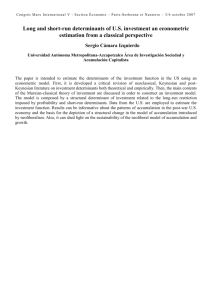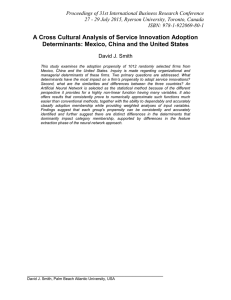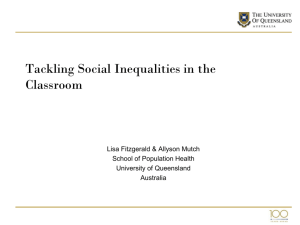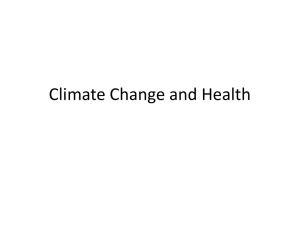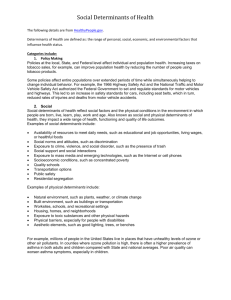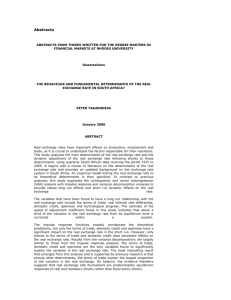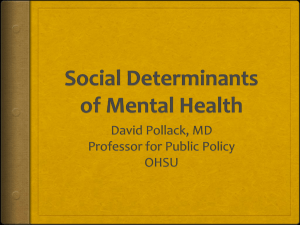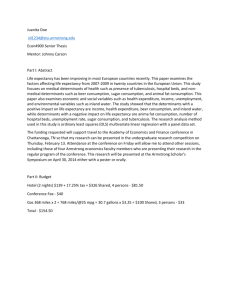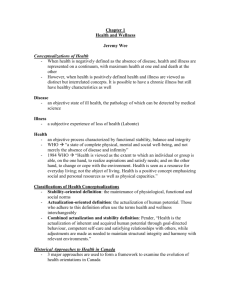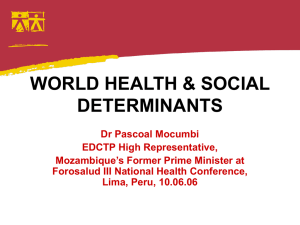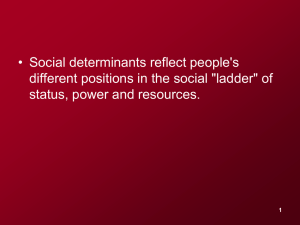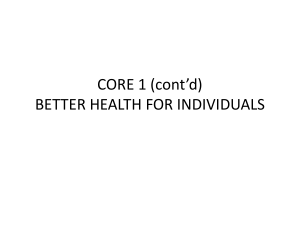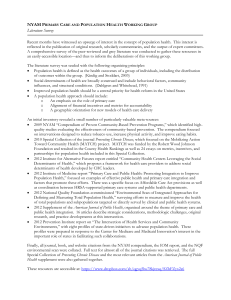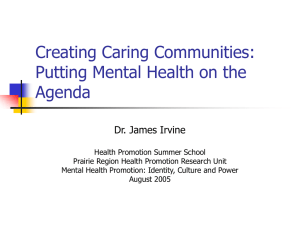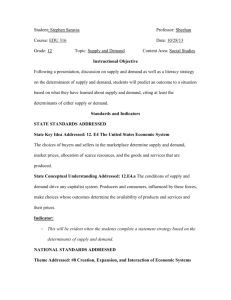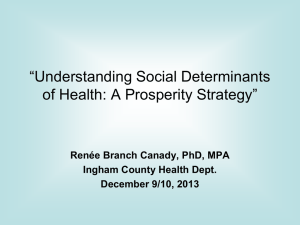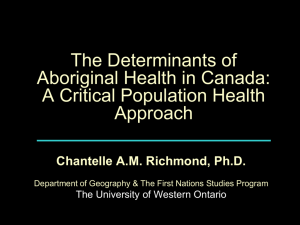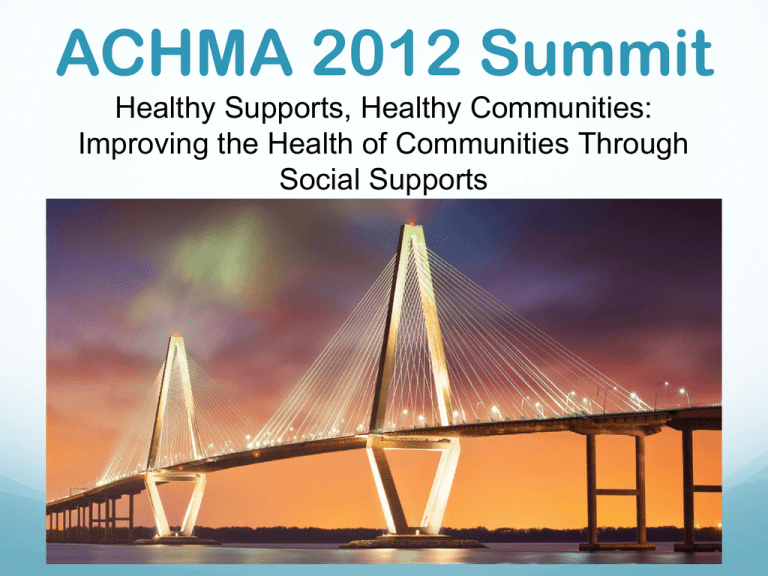
ACHMA 2012 Summit
Healthy Supports, Healthy Communities:
Improving the Health of Communities Through
Social Supports
Charleston, South Carolina
Changing Gears and Focus
Micro to Macro
Individual to Community
Problem Solving to Creative Inventing
Transitions, Transformations and
Compelling Questions
Compelling Questions
What is the best restaurant for seafood?
What is the best thing to buy at the market?
Where do the locals go to hang out?
Where is the best bar?
Why do those sweetgrass baskets cost so
much?
Compelling Questions
What impact do social supports have on the
health of a community?
How can these supports change a community’s
social determinants of health?
What are the implications of these changes for
the prevention, treatment, and recovery of
people with behavioral health problems?
Social Determinants of Health
‘The conditions in which people are born, grow, live, work
and age, including the health system. These circumstances
are shaped by the distribution of money, power and
resources at global, national and local levels, which are
themselves influenced by policy choices.
The social determinants of health are mostly responsible for
health inequities – the unfair and avoidable differences in
health status seen within and between countries.’
World Health Organization (WHO)
Determinants of Health
Factors that contribute to a person's current state of health.
These factors may be biological, socioeconomic,
psychosocial, behavioral, or social in nature. Scientists
generally recognize five determinants of health of a
population:
Biology and genetics. Examples: sex and age
Individual behavior. Examples: alcohol use, injection drug
use (needles), unprotected sex, and smoking
Social environment. Examples: discrimination, income, and
gender
Physical environment. Examples: where a person lives and
crowding conditions
Health services. Examples: Access to quality health care
and having or not having health insurance
A climate that respects and protects basic civil, political,
socio-economic and cultural rights is fundamental to
mental health promotion. Without the security and freedom
provided by these rights, it is very difficult to maintain a
high level of mental health.
National mental health policies should not be solely
concerned with mental disorders, but should also
recognize and address the broader issues which promote
mental health.
This includes mainstreaming mental health promotion into
policies and programs in government and business
sectors including education, labor, justice, transport,
environment, housing, and welfare, as well as the health
sector.
Primary Determinants
of Health
Promoting mental health depends largely on intersectoral strategies.
Specific ways to promote mental health include:
Early childhood interventions (e.g. home visits for pregnant women, preschool psycho-social activities, combined nutritional and psycho-social
help for disadvantaged populations)
Support to children (e.g. skills building programs, child and youth
development programs)
Socio-economic empowerment of women (e.g. improving access to
education and microcredit schemes)
Social support for elderly populations (e.g. befriending initiatives,
community and day centers for the aged)
Programs targeted at vulnerable groups, including minorities, indigenous
people, migrants and people affected by conflicts and disasters (e.g.
psycho-social interventions after disasters)
Promoting mental health depends largely on intersectoral strategies.
Specific ways to promote mental health include:
Mental health promotional activities in schools (e.g. programs supporting
ecological changes in schools and child-friendly schools)
Mental health interventions at work (e.g. stress prevention programs)
Housing policies (e.g. housing improvement)
Violence prevention programs (e.g. community policing initiatives);
Community development programs (e.g. 'Communities That Care'
initiatives, integrated rural development)

